Tom Watson’s best golf tips for playing in the rain, wind and cold – Australian Golf Digest

- by Admin
- September 24, 2024
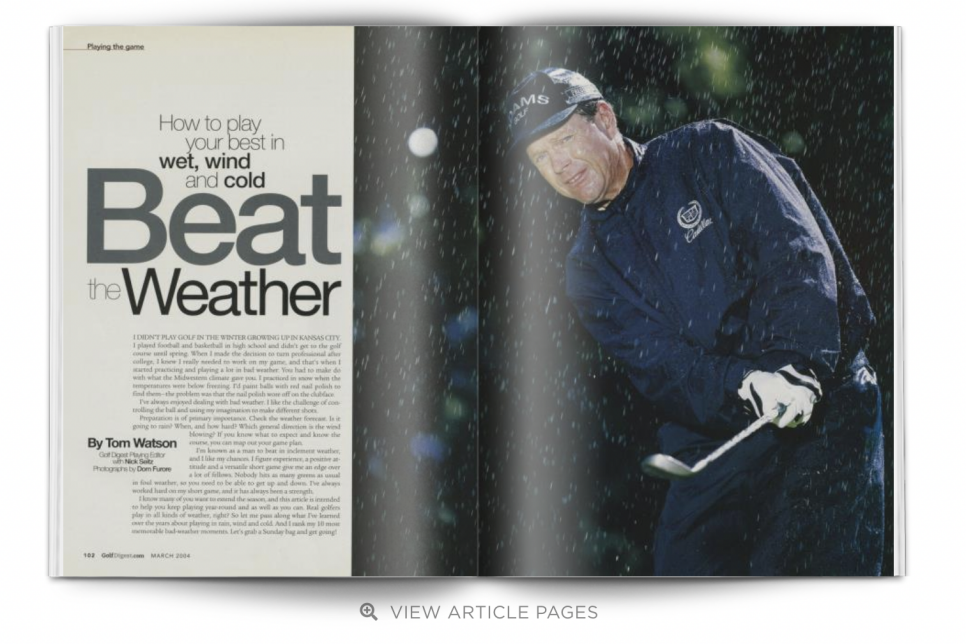
Editor’s Note — With five wins at the Open Championship among his eight major titles and 39 PGA Tour victories, Tom Watson knows from playing when the weather isn’t sunny and 80 degrees. It’s only natural then that Golf Digest asked him to write this instruction article that ran in our March 2004 issue about how to play your best golf in the rain, wind and cold. Watson’s lessons from this article remain just as creative and helpful today as they did back then. We’re confident players of all skill levels can take away some useful golf tips that you can put in play the next time you’re playing in bad weather.
I didn’t play golf in the winter growing up in Kansas City. I played football and basketball in high school and didn’t get to the golf course until spring. When I made the decision to turn professional after college, I knew I really needed to work on my game, and that’s when I started practicing and playing a lot in bad weather. You had to make do with what the Midwestern climate gave you. I practiced in snow when the temperatures were below freezing. I’d paint balls with red nail polish to find them—the problem was that the nail polish wore off on the clubface.
I’ve always enjoyed dealing with bad weather. I like the challenge of controlling the ball and using my imagination to make different shots.
(Golf Digest+ members get access to the complete Golf Digest archive dating back to 1950. Sign up here.)
Preparation is of primary importance. Check the weather forecast. Is it going to rain? When, and how hard? Which general direction is the wind blowing? If you know what to expect and know the course, you can map out your game plan.
I’m known as a man to beat in inclement weather, and I like my chances. I figure experience, a positive attitude and a versatile short game give me an edge over a lot of fellows. Nobody hits as many greens as usual in foul weather, so you need to be able to get up and down. I’ve always worked hard on my short game, and it has always been a strength.
I know many of you want to extend the season, and this article is intended to help you keep playing year-round and as well as you can. Real golfers play in all kinds of weather, right? So let me pass along what I’ve learned over the years about playing in rain, wind and cold. Let’s grab a Sunday bag and get going!
MORE: A cold-weather golf guide: How to play your best when temperatures are down
Rain 
Stan Badz
WHAT YOU NEED TO KNOW TO PLAY WELL WHEN IT’S WET
- Check the weather forecast and make a game plan
- Put on your rainsuit before you go out to warm up
- Putts will be slower and will break less on wet greens
- Think carry, not roll, when selecting clubs
Don’t wait for it to start raining to put on your rainsuit, the way I see many people do. I will dress for it in the locker room, not on the golf course after it starts to rain and my clothes are wet.
If you know it’s going to rain, warm up in your rainsuit. Get a feel for it. Rainsuits are much more flexible these days but still can be somewhat restricting.
Buy waterproof golf shoes and wear them all the time so they feel normal. A full-size golf umbrella also is a good investment, and wet-weather gloves are available. Keep your spare gloves in a plastic bag to make sure they don’t get wet. You need to keep your hands and the grips of your clubs dry. Pack extra towels and gloves. I make sure that my rainpants have pockets, and I keep my hands in my pockets until I’m ready to play. Wet grips and gloves make you grip tighter, which is a no-no.
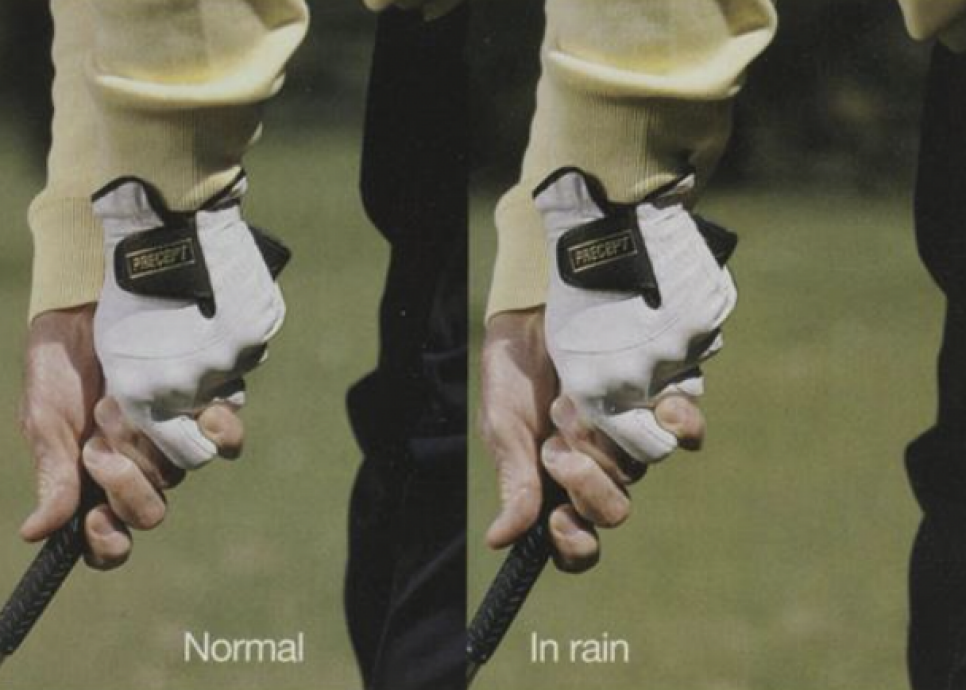
FROM TALL GRASS: When playing out of wet rough I raise my hands a couple of inches to allow the clubhead to travel through the grass easier.
Your feet sink into wet ground, causing you to feel cramped at address. Choke up on the club a half inch to counteract this feeling.
The effect of rain on the ball has not been studied a great deal, but rain will reduce distance, especially off the tee. The ball will travel shorter in the air. Think carry, not distance.
Flyers are less common today with square grooves but can still occur when wet grass is pinched between the clubface and the ball. With less backspin, a flyer will travel farther through the air and roll farther when it lands. Try to predict this extra carry and roll in your club selection. Out of rough I raise my hands slightly at address so the club travels through the grass more easily.
On the green, wet grass is slower. Hit putts harder and figure on less break than usual.
Wind 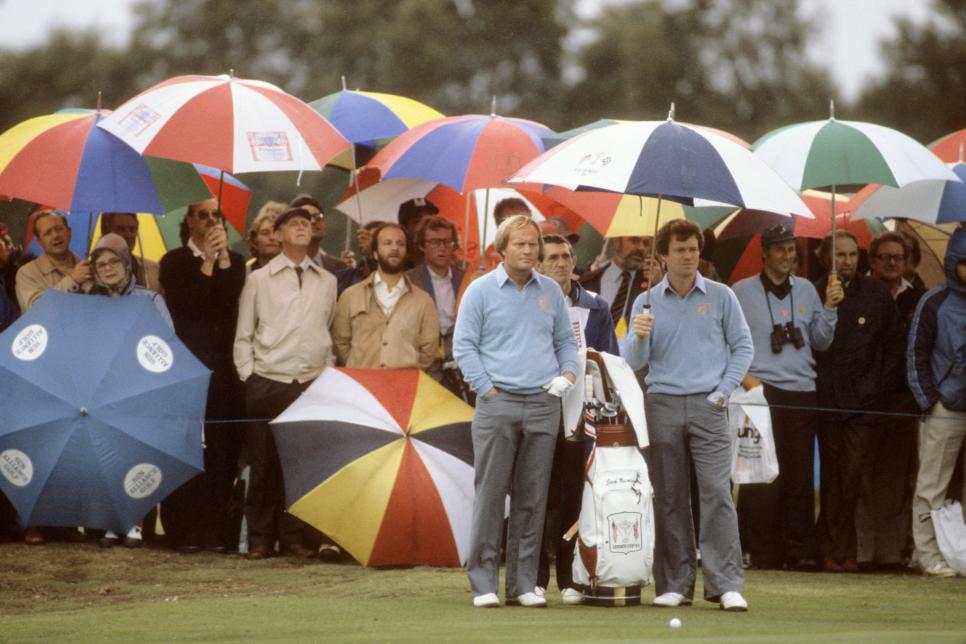
Graham Finlayson
THE KEY IS SOLID CONTACT—AND TO EXPECT THE UNEXPECTED
- Widen your stance for greater stability
- Allow for more wind than you think
- Remember that wind affects short shots, too
- Always think two shots ahead
I don’t hit the ball low, which would help in the wind. The key for me is solid contact. On shots off the ground, I move the ball back in my stance to strike the ball squarely. This isn’t a bad idea in general, especially from poorer lies. It also lowers ball flight.
It’s easy to lose your balance in the wind. I widen my stance for extra stability. That shortens my turn and makes it essential to keep a good rhythm in the swing. Gusty wind tends to create gusty swings. Rhythm should be the final thing you think about before you take the club back. Maintain an even rhythm in your swing on every shot.
Strategically, the common mistake is not to compensate enough for the wind. Know how far you hit it into the wind and downwind. A headwind hurts distance more than a tailwind helps. John Calabria, a Golf Digest technical advisor, says you lose about 18 yards of carry and roll for every 10 miles per hour of headwind. You gain only about 10 yards for every 10 mph of tailwind.
Always think two shots ahead. Ask yourself: Where is the easiest place from which to proceed if you miss the fairway or green? You don’t want to be pitching up a steep embankment to a pin that’s cut very close to you downwind. But you might not mind that shot into a strong wind.
Crosswinds accentuate the curve of your ball and affect your distance. For example, a slice with a left-to-right crosswind will carry farther and then roll farther after it lands at an angle. With a right-to-left crosswind the ball will slice less and go shorter.
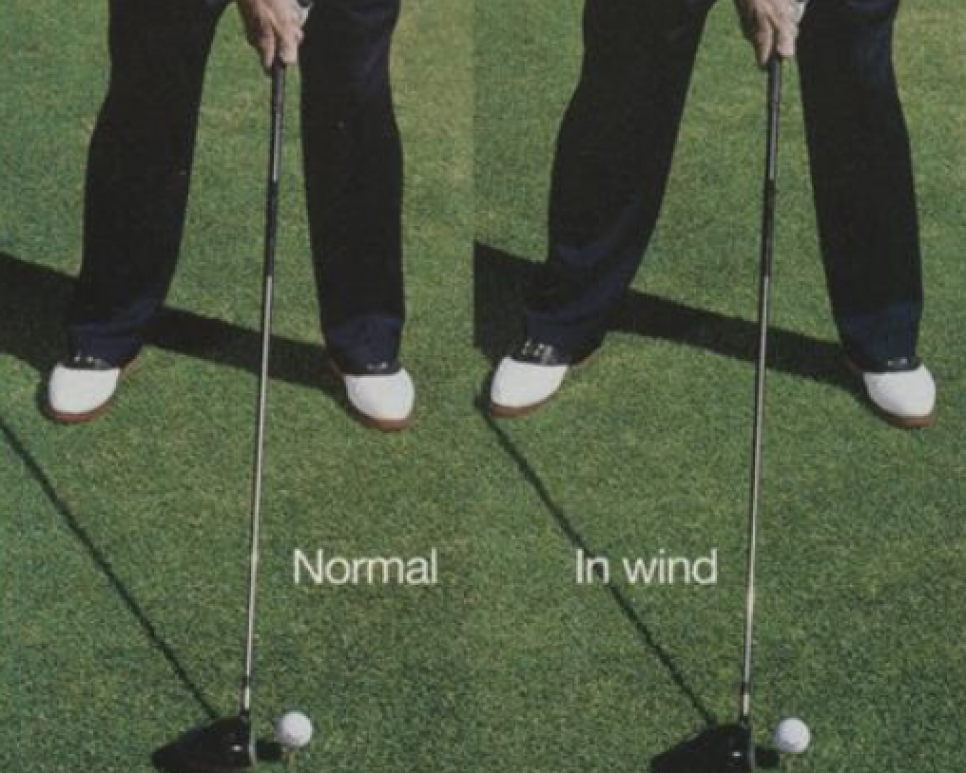
WHEN IT BLOWS: I widen my stance for balance in wind. I swing harder going downwind; I swing easier, with more club, into the wind.
By Calabria’s calibrations, we should aim 5 percent of the distance of the shot to the left or right of the target for every 10 mph of crosswind. The longer the shot, the more the crosswind will move it.
Remember that all principles of wind play apply to short shots as well as long shots. When I putt in wind, I widen my stance, bow my knees and crouch some for balance. You must stay steady over the ball. When chipping into the wind, think it’s easy to stop the ball. Chipping downwind, think it’s easy to make the ball roll.
MORE: Throwing grass to check the wind is dumb. Here’s why
Cold 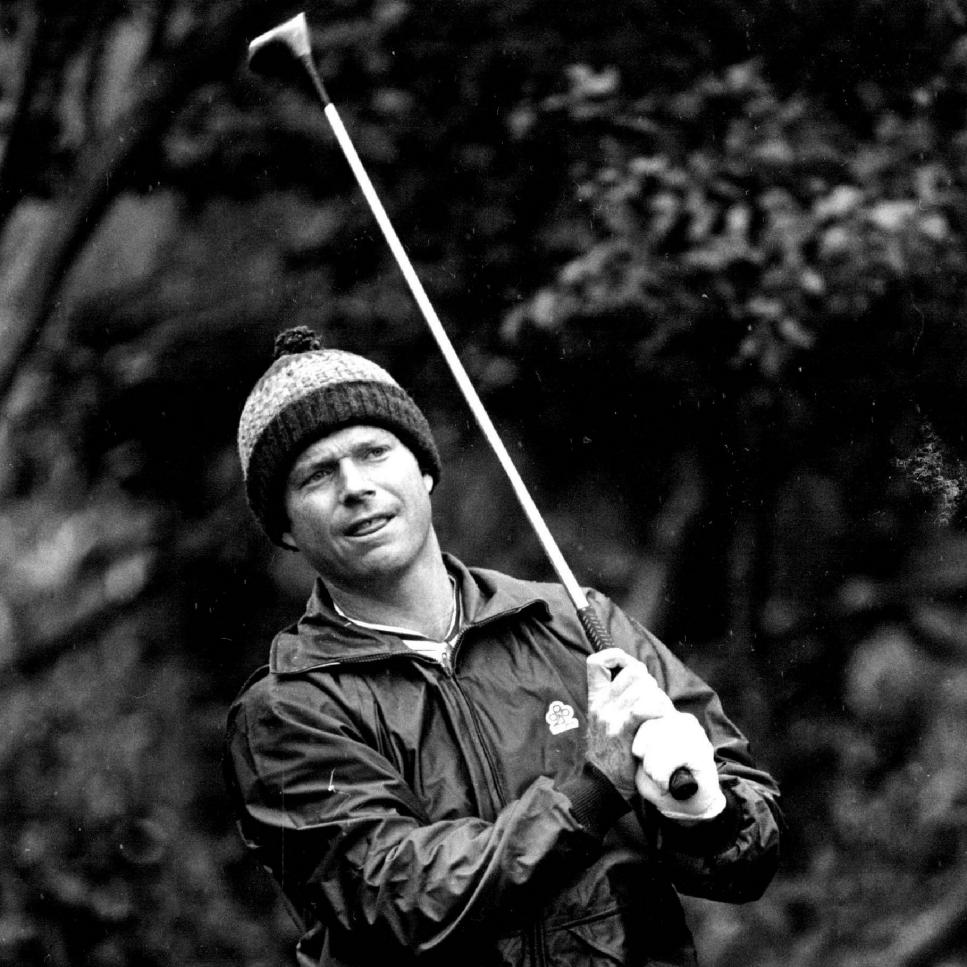
Duane Howell
DO WHATEVER YOU HAVE TO DO TO KEEP YOUR HANDS WARM
- Be sure to start warm, whatever you do
- You’ll be warmer walking than riding in a cart
- Figure on less distance for your full shots
- Above all, keep your hands warm to feel the club
Don’t start a round cold, because you’ll never get warm. In a golf cart especially. 1 won’t dress for cold on the golf course. I dress for it in the locker room or at home and then warm up extra well. Preparation again. If you have to shed clothes as you go, shed them. But start off warm.
I always pack silk long johns to put on under my slacks. I add my rainsuit bottoms, and my legs are always toasty. On my upper body I will wear a turtleneck and a sweater, plus a windshirt and/or rain jacket, depending on the temperature and windchill factor. I like these layers of clothing to be as flexible and quiet as possible. They aren’t so bulky that they hamper my swing.
A ski cap keeps my head warm. A lot of body heat can escape from your head. It’s critical playing golf to keep your hands warm. If your hands get cold you can’t play. I like to keep my hands in my rainpants pockets until I’m preparing for a shot. I’m lucky: My caddie, Bruce Edwards, holds the umbrella over me when I’m walking in a cold rain so I can keep my hands dry and warm in my pockets. If your rainpants don’t have pockets, wear a pair of down ski mittens between shots—a size larger to fit over your golf glove. Carry a hand warmer. Do whatever you have to do to keep your hands warm so you can feel the club.
I’ll warm up before my round by briskly walking a quarter of a mile or more before I ever stretch or swing a club. It gets my blood flowing. Then I’ll do the series of stretches I’ve talked about doing before any round of golf, for at least 10 minutes: the side-bend stretch with the club held at both ends (left)] the behind-the-back stretch, where I raise the club as high as I comfortably can; the torso twist, where I rotate both ways in a simulated address position; and the shoulder stretch, where I pull one arm across my chest. I finish with some full practice swings and, finally, hit some practice balls.
If you have the option of walking, I strongly recommend it to stay warmer. Riding in a cart creates its own headwind. There’s a good selection of lightweight Sunday bags on the market, and you don’t need to carry a full set of clubs. It can develop your shotmaking skills to play with fewer clubs.
The ball won’t travel as far in cold weather. You lose about two yards for every 10-degree decrease in temperature—and more if the ball itself is cold. (When the temperature drops, Bruce will put a hand warmer in his pocket and keep my golf balls in that pocket before I play.) It can be enough to influence club selection, especially if your swing is already affected by the cold. A cold ball certainly feels harder around the green, but performs the same.
When cold combines with wind and/or rain, you have to adjust accordingly. Or, if the weather is too bad, wait for a better day and work on your game indoors.
More From Golf Digest 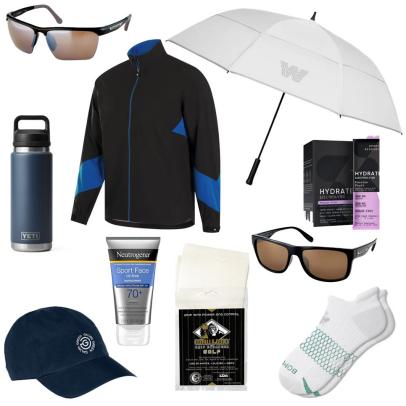 Sponsored How to stock your golf bag to be prepared for any situation on the course this fall
Sponsored How to stock your golf bag to be prepared for any situation on the course this fall  Golfpocalypse Playing golf in bad weather makes me feel alive
Golfpocalypse Playing golf in bad weather makes me feel alive  Sun Day Red The best rain gear for golf, according to Tiger Woods
Sun Day Red The best rain gear for golf, according to Tiger Woods
This article was originally published on golfdigest.com
The Latest News
-
December 28, 2024The moment the Boxing Day Test took a turn for the worse for Australia
-
December 28, 2024He was the last Australian man to win the Australian Open and did so while ranked outside the world’s top 200
-
December 28, 2024Their ‘little gladiator’: Team Konstas absorbs Sam’s supernova debut
-
December 28, 2024Reddy’s fighting century keeps India in Border-Gavaskar series
-
December 28, 2024Australia’s hopes of MCG victory worn down by fighting spirit of India’s youth





